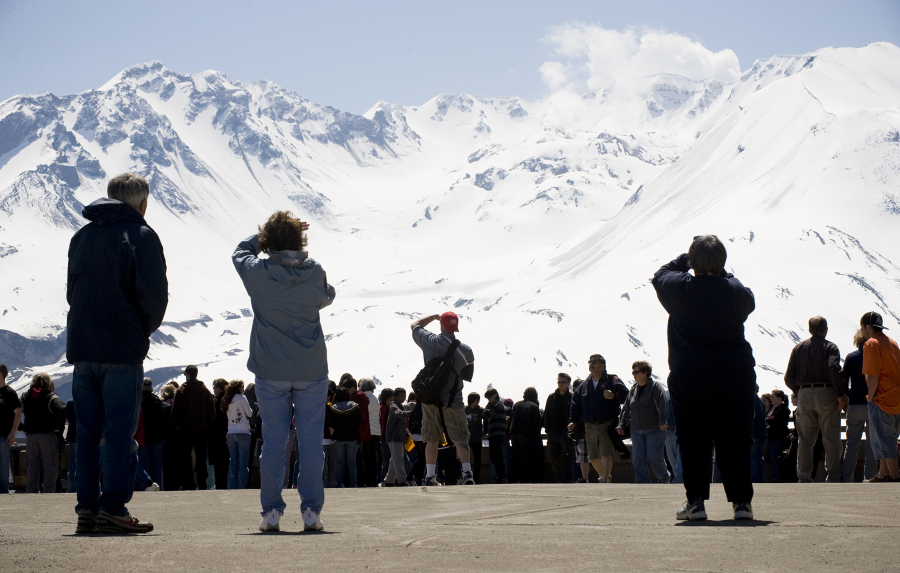An open house on May 12 at Vancouver’s U.S. Geological Survey center and the season opening of the observatory near the crater of Mount St. Helens on May 16 will be part of Volcano Preparedness Month in Washington.
The open house will be from 10 a.m. to 5 p.m. on May 12 at Cascades Volcano Observatory, 1300 S.E. Cardinal Court, in Cascade Park.
Visitors can talk with scientists, tour labs and test their knowledge of volcano hazard zones and volcano safety, said Carolyn Driedger, USGS hydrologist and outreach coordinator.
Displays and demonstrations will illustrate the work that happens daily at the observatory, including identification of earthquakes and interpretation of data arriving from monitoring stations on Cascade Range volcanoes.
Mount St. Helens in May
• May 12: Open house, 10 a.m.-5 p.m. at Cascades Volcano Observatory, 1300 S.E. Cardinal Court, in Columbia Tech Center, Vancouver.
• May 16: Season opening of Johnston Ridge Observatory, 5½ miles from the Mount St. Helens crater.
• May 18: The 38th anniversary of the eruption of Mount St. Helens; (a fee-free day at Johnston Ridge Observatory).
• May 19: “It’s a Blast” event, 10 a.m.-6 p.m. at Johnston Ridge Observatory.
Scientists will demonstrate monitoring instruments, including thermal imaging, volcanic gas collection and a robotic arm that processes sediment samples.
Computer simulations will show the ash path of a future eruption and forecast how far debris flows will travel downstream. Visitors can bring a favorite mystery rock to be identified by a geologist.
The Johnston Ridge Observatory, at the end of state Highway 504, will open for the season on May 16. On May 19, the nonprofit Mount St. Helens Institute will present “It’s a Blast” — a family friendly event marking the first weekend of the season. It will feature hands-on activities, ranger talks, films and exhibits. All admissions collected on May 19 will support the Mount St. Helens Institute’s programs, including youth education.
Volcano Preparedness Month uses the anniversary of the 1980 eruption as an opportunity to help Washington residents become more familiar with volcanic risk in their communities.
At 8:32 a.m. on Sunday, May 18, 1980, the bulging north flank of Mount St. Helens slid away in a massive landslide. Seconds later, the uncorked volcano exploded and blasted rocks horizontally, destroying centuries of forest growth in a span of several minutes and killing 57 people.
Two online sessions also are on the schedule:
At 10:30 a.m. on May 9, Seth Moran, the observatory scientist in charge, will deliver a “State of the Cascades” report to begin a live Facebook session. Visit USGS Volcanoes on Facebook for more information.
At 1 p.m. on May 15, Washington Emergency Management Division will sponsor a Reddit “Ask-me-Anything,” with a focus on Cascade volcanoes. A team of experts in volcanology, geology and preparedness will be on hand to answer questions.
Information is available at volcanoes.usgs.gov/observatories/cvo
If You Go
•What: Johnston Ridge Observatory.
• When: Starting on May 16, the observatory will be open for the season from 10 a.m. to 6 p.m., seven days a week.
• Where: About 52 miles east of Castle Rock at exit 49 off Interstate 5, at the end of state Highway 504.
• Fee: $8 per adult; children 15 and younger are free; (fee includes observatory and nearby trails); America the Beautiful federal passes accepted.




